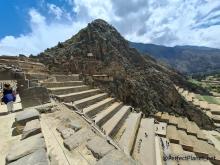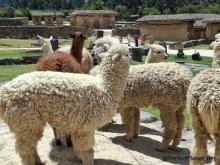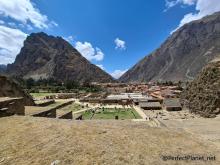Today we visited Ollantaytambo in the Sacred Valley.
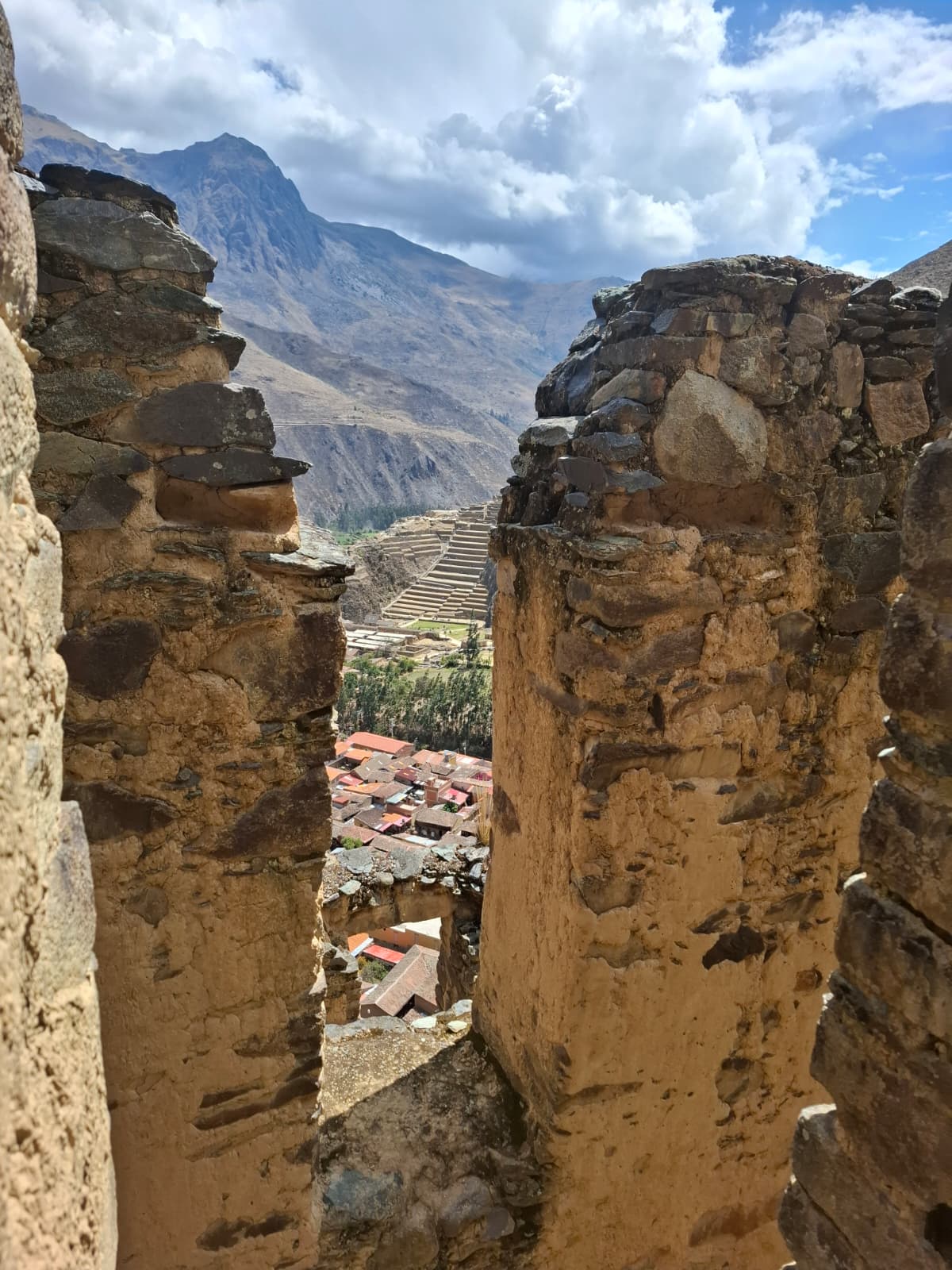
Ollantaytambo

Ollantaytambo
To visit Ollantaytambo, you have several options: take a tour of the entire Sacred Valley (about 8 hours, 70 soles/person), take a tour that does not include Maras and Moray (7 hours, 70 soles/person), take a tour that only includes Maras and Moray (40 soles/person), or take a bus (10 soles/trip) and visit Ollantaytambo on your own, which is what we did.
After breakfasting on eggs with bread, jam, butter, and black tea, we walked about twenty minutes from our hostel to Pavitos Street to catch the bus.
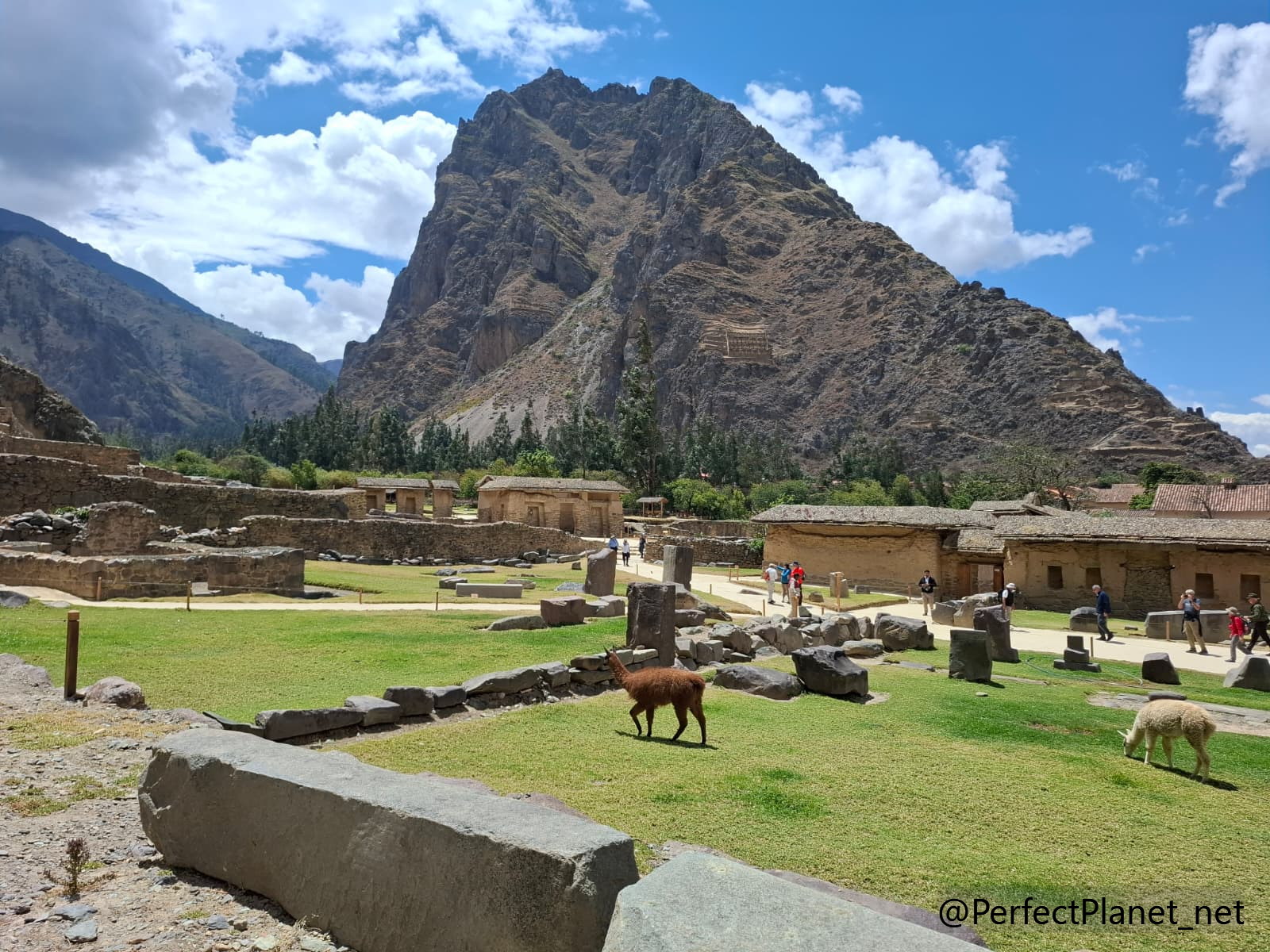
Ollantaytambo
Cuzco is a complicated city for pedestrians to cross the streets. Cars do not respect pedestrians, and in many places there is a person stopping traffic so that you can cross.
Before we arrive, taxi drivers approach us offering private services for 40 soles per person for four people or 100 soles for two people. There is also a van for 15 soles per person. As it is leaving, we take it.
It takes us just over an hour and a half to reach Ollantaytambo.
Ollantaytambo is a small town in the Sacred Valley located next to the Urubamba River, surrounded by mountains and Inca archaeological sites. Trains to Machu Picchu pass through here.
The van drops us off at the Plaza de Armas, where all the buses to Cuzco depart. The good thing about coming on your own is that you arrive before the tourist buses and there are fewer people at the sites.
Ollantaytambo was built in the 15th century by the Inca emperor Pachacutec as an administrative, military and religious centre. Important battles against the Spanish colonists were fought here.

Ollantaytambo
The archaeological site of Ollantaytambo is the main point of interest, but it is also worth taking a stroll around the old part of the village, with its cobbled streets and water channels.
There is a tourist information booth in the main square.

Ollantaytambo

Ollantaytambo
The archaeological site of Ollantaytambo costs 70 soles per person for foreigners. If you are going to visit the Sacred Valley for two days, there is a ticket for 130 soles per person.
You can visit the site on your own or hire a guide, which is not mandatory. However, if you do not hire a guide, you should find out about the site in advance, otherwise you will not understand anything. There are toilets inside the complex.
The complex is quite large and there is a lot to see. You can start the tour by climbing the terraces or platforms to the Temple of the Sun, where you will find an Inca sundial or Intihuatana.

Temple of the Sun
Passing the area of the ten Hornainas, you can climb up to a viewpoint located about 500 metres away, which also has archaeological remains.
Another highlight is the Ñusta Bath, a masterpiece fountain built by the Incas, who were experts in hydraulic engineering. This can be easily seen in all their temples, where water plays a very important role.
It takes over an hour and a half to visit the complex.

Ollantaytambo
There are more archaeological sites in Ollantaytambo, and they are free to visit. We went to Pinkuylluna. It is accessed via a steep slope, at the junction between Calle Lares and Calle de las Rosas. There is a restaurant with lockers at the bottom of the first flight of steps. The best-preserved buildings at this site are some ancient granaries. The views of Ollantaytambo are spectacular.

Ollantaytambo
We ate at Las Canteras restaurant on Lares Street. It is a small family business where we made a furry friend. We ordered a hamburger and a chicken milanesa with quinoa and vegetables and muña tea, all for 37 soles.
We returned to the Plaza de Armas to catch a bus back to Cuzco. At first, we had trouble finding it because they pick up on the pavement where the Qori Illari restaurant is located, and you have to ask almost all of them until you find one that goes to Cuzco. The buses are actually large vans and cost 10 soles per person.
An hour and a half later, we arrived in Cuzco. The bus dropped us off at Plaza de San Francisco, next to the Santa Clara arch and the San Pedro market.
We love markets, so we head to the San Pedro market. It's a mix between a tourist market and a traditional market. It's very large and there are many stalls selling meat, fish, fruit and vegetables, but it's also a good place to buy souvenirs, coffee, cocoa, herbal teas, clothes, mementos... You have to haggle, although there isn't much room for negotiation as almost all the stalls have the same prices.
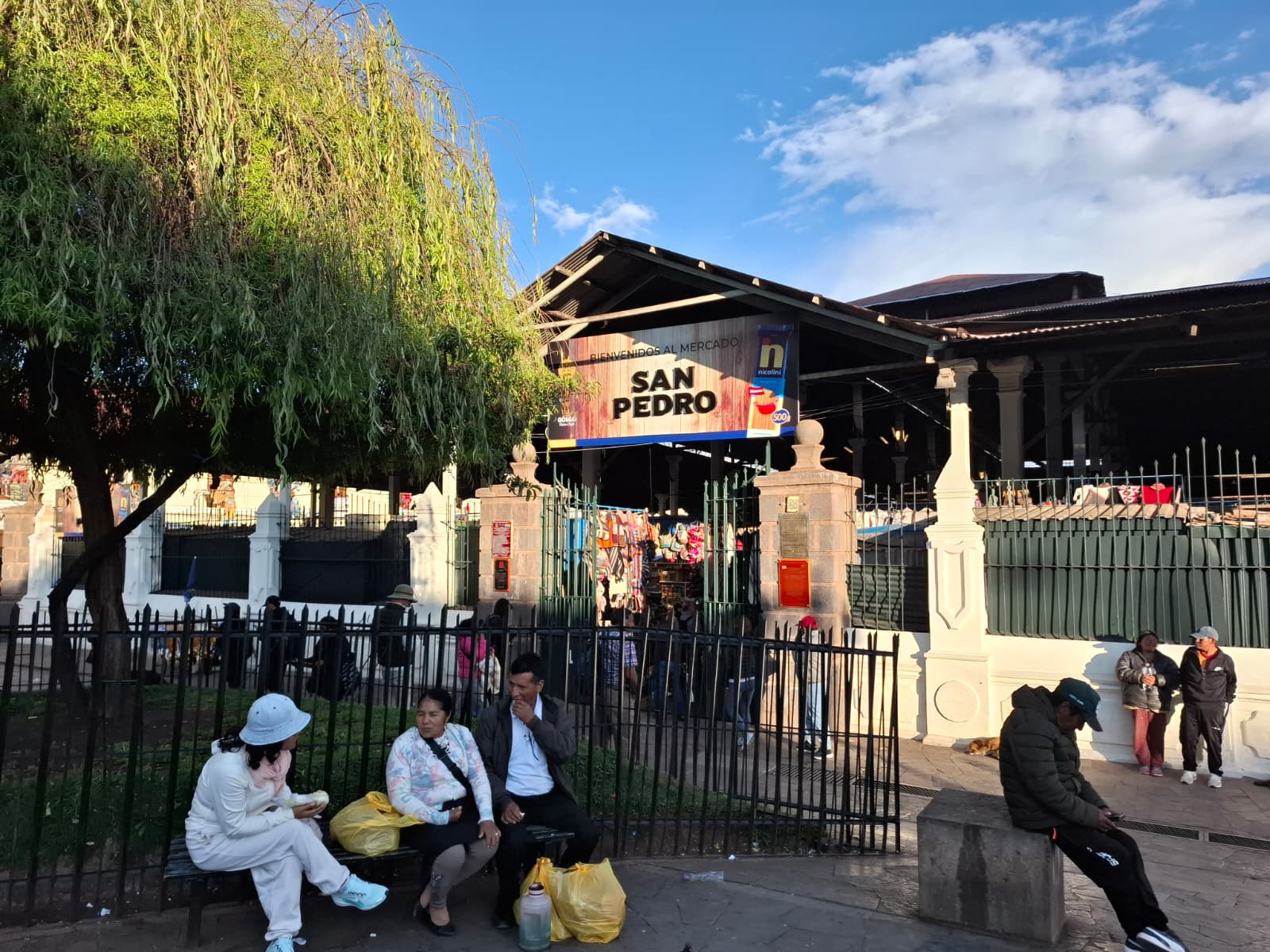
San Pedro market
We bought chocolate for 8 soles each and bags of muña leaves for 2 soles each.
On the way back to the hostel, we bought some cheese and cinnamon ice cream, which is very famous in Peru. It's delicious, but it doesn't really taste like cheese. (7 soles)

San Pedro market
Back at the hostel, we packed our rucksacks for our new adventure in Peru, the Salkantay Trek.
We left our large rucksacks at the hostel and each took one with the bare minimum: four changes of clothes, a first aid kit, toiletries, water, sun cream, warm clothing and a raincoat.
Tomorrow they will come and collect us at 3.30 am.

Cuzco
Accommodation: Big Vacation Hostel, double room with bathroom and breakfast, $19/night
Bus from Cuzco to Ollantaytambo: 10 soles/person/trip; 15 soles/person/trip in a shared van for a maximum of 9 people; 20 soles/person/trip in a shared taxi for 4 people
Entrance to the archaeological site of Ollantaytambo: 70 soles/foreigners
Lunch at Las Canteras restaurant: hamburger and chicken milanesa with quinoa and vegetables and muña tea: 37 soles
- Log in to post comments

